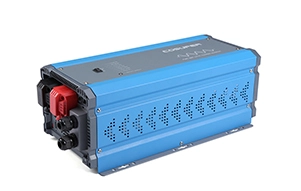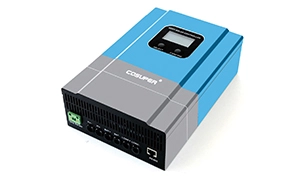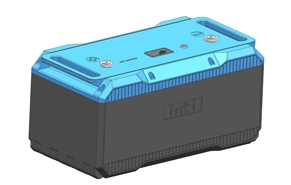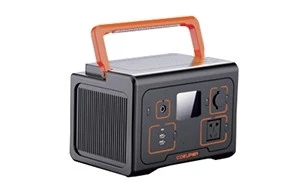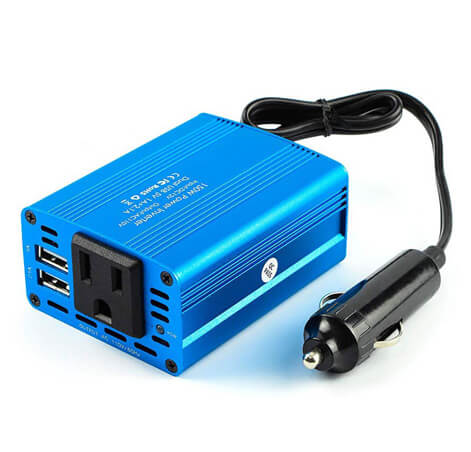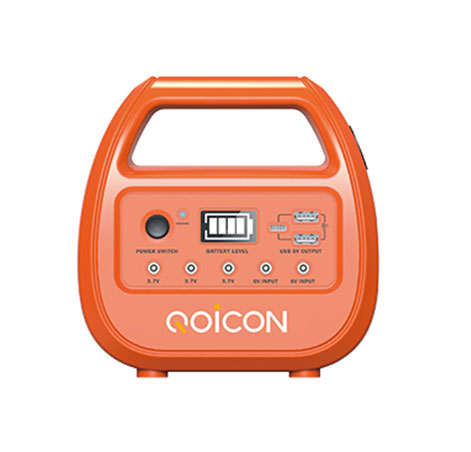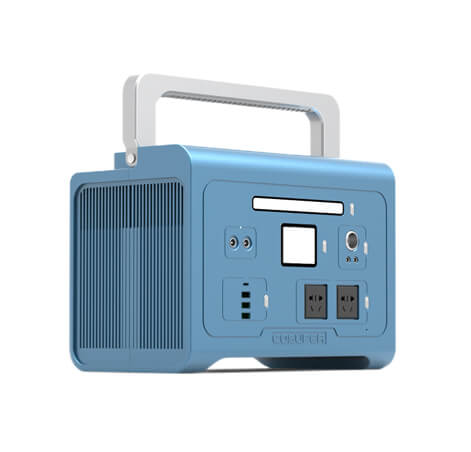Getting Started
When a motorized appliance or a tool turns on, there is an initial surge of power to start. This surge of power is referred to as the "starting load" or "peak load." Once started, the tool or appliance requires less power to operate. This is referred to as the "continuous load" in terms of power requirements. You will need to determine how much power your tool or appliance requires to start up (starting load) and its continued running power requirements (continuous load).
Power consumption is rated in watts, or it can be calculated from amperes (amps). This information is usually stamped or printed on most appliances and equipment. If this information is not indicated on the appliance or equipment, check the owner's manual.
Multiply: AC AMPS X 110 (AC voltage) = WATTS
* This formula yields a close approximation of the continuous load of your appliance.
Multiply: WATTS X 1.5 = Starting Load
* This formula yields a close approximation of the starting load of most appliances. Exceptions are motorized appliances such as pumps, freezers and air conditioners. These appliances can have startup loads of up to three to eight times the rated watts.
Determining the DC Power Requirement
Powering multiple appliances from the high-power CCH1000/ CCH1500/ CCH2000/ CCH3000 inverter requires a 12 volt bank
of batteries (several batteries). To calculate the approximate power in amps a 12 volt battery bank has to supply you need. To know the current, or amps required for powering the continuous AC load, a shortcut method is to divide the continuous AC load wattage by 12. For example, the continuous AC load is 1500 watts. The current (amps) is: 1500/12 or 125 amps at 12 VDC.
Sizing the Battery Bank
To determine the minimum battery bank ampere-hour rating that you will need to operate appliances from the inverter, and
any DC appliances powered by the battery bank, follow these steps:
1. List the maximum wattage that the inverter has to provide (as above).
2. Estimate the number of hours the appliances will be in use between battery recharges. This will differ depending on appli
ances. As an example, a typical home-use coffeemaker draws 500 watts during its brew time of 5 minutes; it maintains the temperature of the pot at about 100 watts.
Typical use of a microwave oven is only for a few minutes. Some longer operating time appliances are lamps, TVs, computers and refrigerator / freezers.
3. Determine the total watt-hours of energy needed. Then multiply the average power consumption in watts by the number of hours of run time.
For example: 1500 watts for 10 hours = 15,000 watt hours. Using the 1500 watts (or 150 Amps) for 10 hours example as above, then 150 amps is needed for 10 hours. This provides us with the basic amp-hours (AH) of battery that is required. Ten hours at 150 amps equals 1500 Amp Hours (AH). This answer is just a beginning because there are other conditions that determine actual run time.
These include:
AC appliance load and time in use (basic Amp Hour)
Cable gauge and length (cable losses)
Charge level of the batteries (between use, chargers have to be able to fully charge the batteries)
Temperature of the batteries (colder batteries provide fewer amps)
Age and condition of the batteries (older batteries lose capacity/amp hours)
Compliance with turning off unnecessary AC and DC loads.If there is any doubt about sizing the battery bank, it is safe to overestimate the amp hour requirements of the battery bank.
Note:
The type of batteries you use to power your high power inverter is important. Operating a high-power inverter will routinely
diCCHarge batteries and they will require frequent recharging. Batteries used to start engines are not designed to repeatedly
charge and diCCHarge. COSUPER recommends using “deepcycle” or “marine” rated batteries.

 English
English 